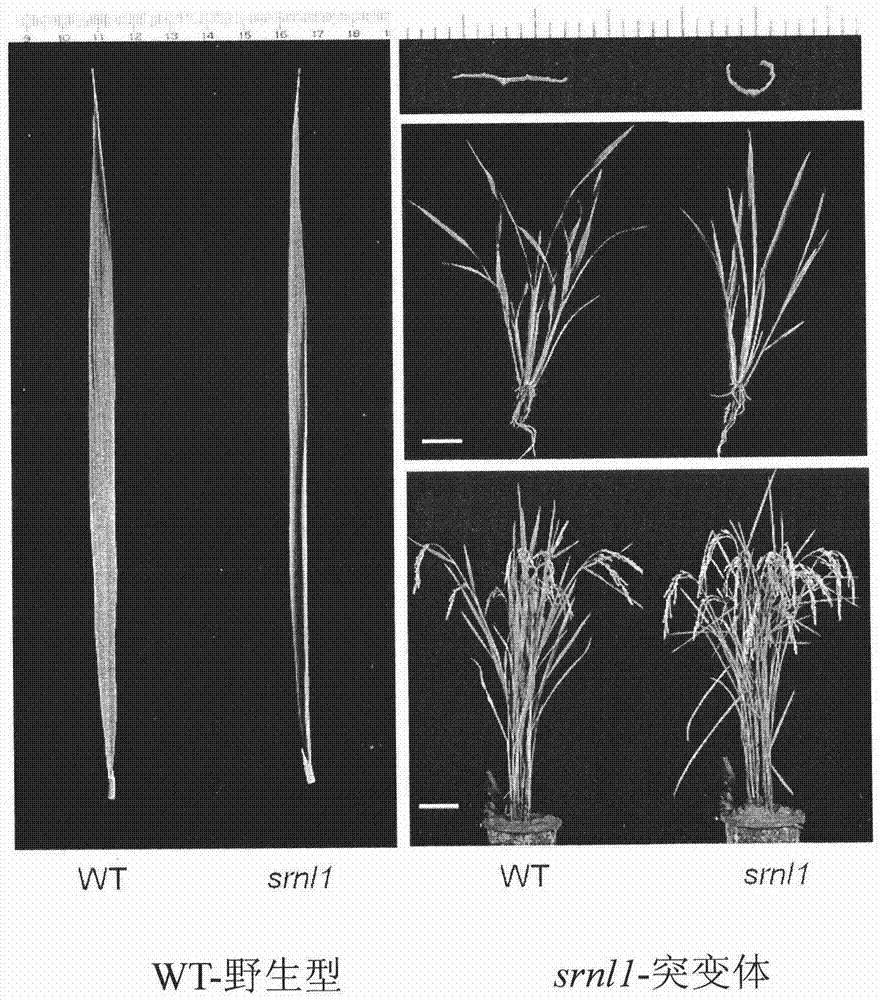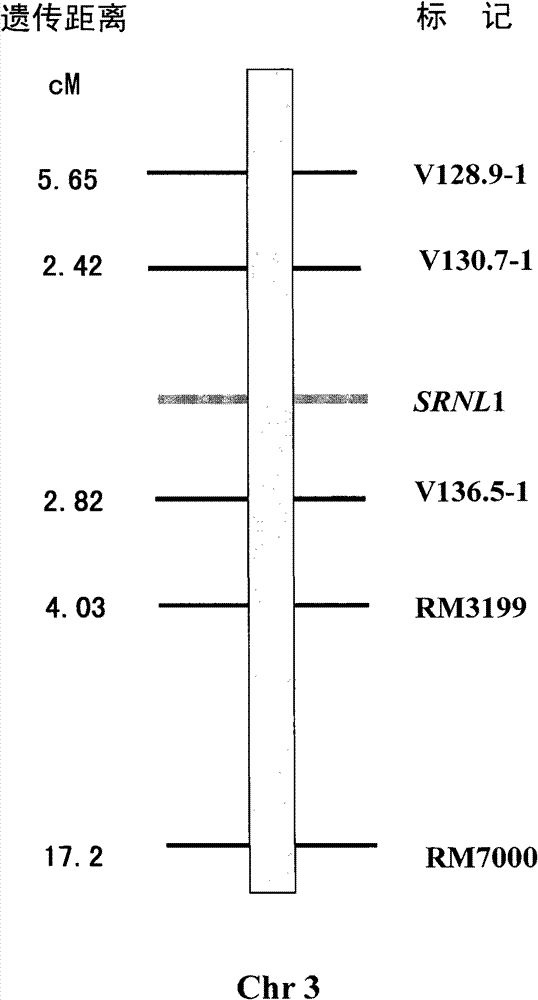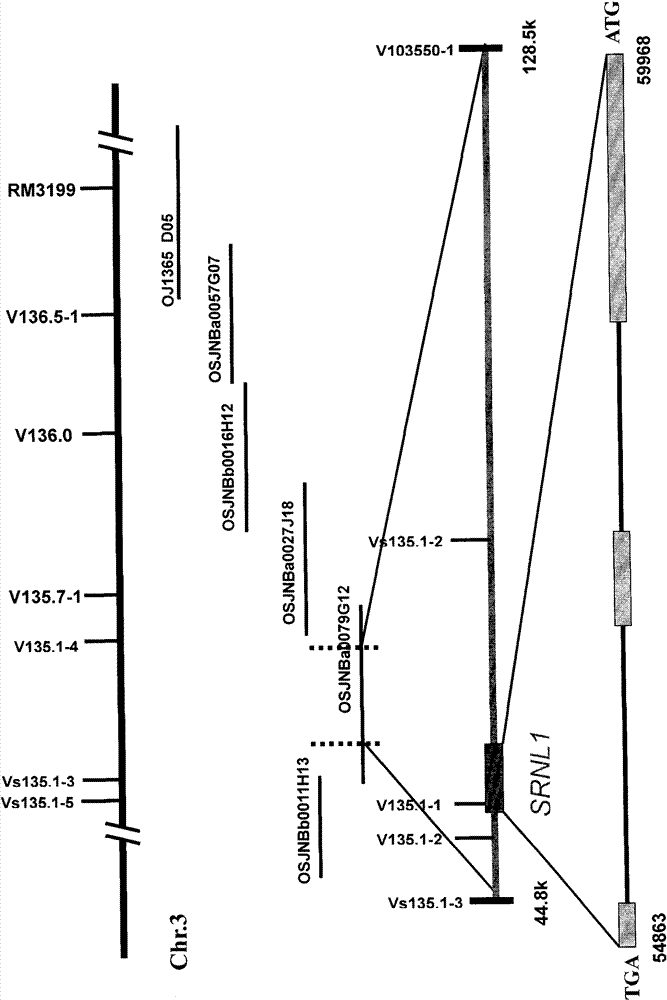Leaf-shaped control gene SRNL1 of rice and application thereof
A gene and rice technology, applied in the fields of application, genetic engineering, plant genetic improvement, etc.
- Summary
- Abstract
- Description
- Claims
- Application Information
AI Technical Summary
Problems solved by technology
Method used
Image
Examples
Embodiment 1
[0043] 1. Rice material
[0044] The rice (Oryza sativa L.) mutant (Semi-rolled and narrow leaf1) (srnl1) used in the present invention is made from the conventional japonica rice variety "Nihonbare" seed (japonica) After being treated with a chemical mutagen (ethyl methane sulphonate, EMS) at a concentration of 1%, the phenotypically stable semi-rolled narrow-leaf mutant srnl-1 was obtained through mass screening. The original wild-type material is "Nipponbare" japonica rice variety .
[0045] 2. Analyze and target groups
[0046] The homozygous srnl1 mutant was crossed with the common indica variety Taizhong Local No. 1 (TN1) with flat leaves, and the F1 generation was selfed to obtain an F2 population, from which 1451 srnl1 mutant individuals (whose leaves were half-curled and narrow leaves) were selected. as a targeting group. At the early stage of tillering, about 0.5 grams of young leaves were taken from each plant to extract the total DNA.
[0047] 3. SSR and STS ma...
Embodiment 2
[0060] Transformation of plant transformation vector pCAMBIA1300 and plasmid transformation:
[0061] Design 1 pair of primers Vsrnl-1300 (F: GC TTAATTAAGCCGTCGCTG; R: GC ATTTAAATCCGACGAGGG), wherein the front primer contains the BamH I restriction site sequence (GGATCC), and the rear primer contains the Hind III (AAGCTT) and Swa I (ATTTAAA) restriction site sequence; the synthetic Vsrnl-1300 primer PCR amplification Genomic DNA of Nipponbare was amplified to obtain a 421bp fragment (SEQ ID NO: 4) that does not contain all the restriction site sequences on the pCAMBIA1300 multi-cloning site. Dicer performed double digestion and recovered a 411 bp target fragment (SEQ ID NO: 5). The fragment was connected to the pCAMBIA1300 vector after double digestion with BamH I and Hind III endonucleases, so that the Swa I restriction site was introduced between the multiple cloning sites BamH I and Hind III of the pCAMBIA1300 vector . Then the BAC clone OSJNBa0079G12 was completely d...
PUM
 Login to View More
Login to View More Abstract
Description
Claims
Application Information
 Login to View More
Login to View More - R&D
- Intellectual Property
- Life Sciences
- Materials
- Tech Scout
- Unparalleled Data Quality
- Higher Quality Content
- 60% Fewer Hallucinations
Browse by: Latest US Patents, China's latest patents, Technical Efficacy Thesaurus, Application Domain, Technology Topic, Popular Technical Reports.
© 2025 PatSnap. All rights reserved.Legal|Privacy policy|Modern Slavery Act Transparency Statement|Sitemap|About US| Contact US: help@patsnap.com



